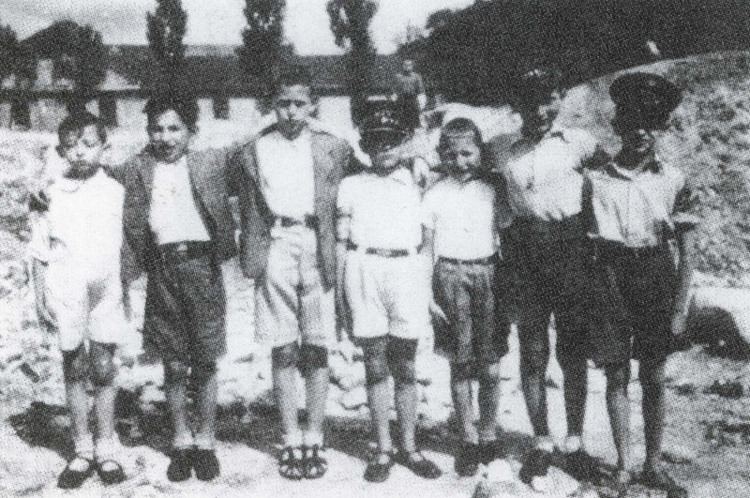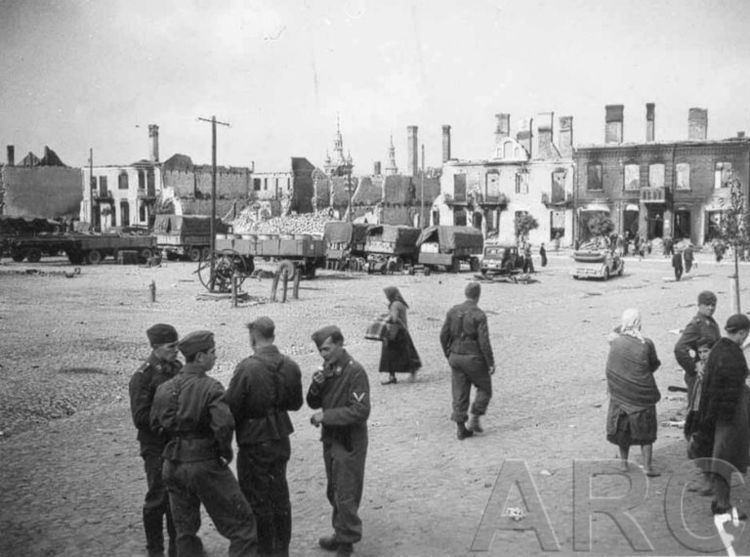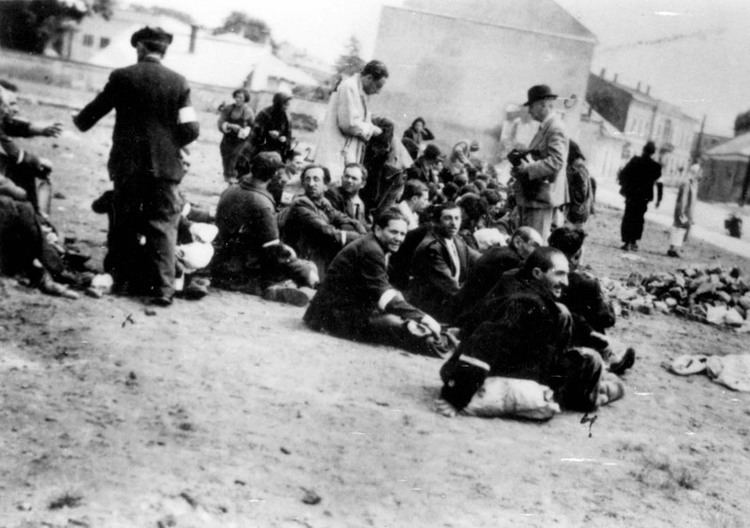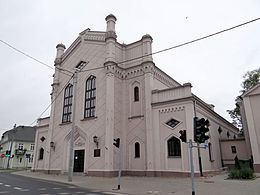Organizations Schutzstaffel (SS) | ||
 | ||
Incident type Imprisonment, forced labor, starvation | ||
Holocaust survivor testimonies the jewish police in the piotrk w trybunalski ghetto
The Piotrków Trybunalski Ghetto (Yiddish: פּיִעטריקאָװ) was created in Piotrków Trybunalski only 38 days after the 1939 Nazi German Invasion of Poland in World War II. It was the first Jewish ghetto in Nazi-occupied Europe, founded on 000000001939-10-08-0000October 8, 1939, on the general orders of Reinhard Heydrich. After a battle with the Polish Army resulting in heavy devastation, the town was occupied by the Wehrmacht on 000000001939-09-05-0000September 5, 1939. Piotrków was made into a county seat (Kreis) of the newly created Łódź District (Regierungsbezirk Litzmannstadt) of the German territory of Reichsgau Wartheland. It was put under the command of Hans Drexler, an appointed Nazi Oberbürgermeister who also created the Ghetto. In total, some 16,500–25,000 (up to 28,000) Jews went through the Piotrków Ghetto which was liquidated beginning 14 October 1942 in four days of deportations to Treblinka and Majdanek extermination camps aboard overcrowded Holocaust trains.
Contents
- Holocaust survivor testimonies the jewish police in the piotrk w trybunalski ghetto
- History
- Deportations and rescue efforts
- References

History

The Piotrków Ghetto was the first wartime ghetto of its kind. Set up in one of Poland's oldest cities with a thriving Jewish community, it took until late January 1940 for the new inmates to move into it. First, the Judenrat was established and ordered to issue an announcement about the relocation, but this had no effect. Consequently, the Germans themselves evicted the Jews from their homes, transferring them to the ghetto by force. Eventually, up to 28,000 Jews were squeezed into a part of town where only 6,000 people previously lived. The homes vacated by the Jews were assigned to Christians and members of the German minority who took over their businesses after the relocation. It was an open type ghetto –- an early variant of Nazi ghettoization -– without the barbed wire fences introduced later throughout all of occupied Poland. Only warning signs with skulls were placed along the boundaries, and the main gate erected. The ghetto was pronounced closed from the outside on 000000001939-10-28-0000October 28, 1939.

There were 6,533 German Volksdeutsche living in Piotrków in 1940, making foraging for food impossible for the Jews because they could not tell the difference between friend and foe. The initial population of about 10,000 Jews were not required to use permits to move around town, but shootings by Ordnungspolizei became commonplace and a curfew in the ghetto was introduced. The influx of refugees expelled from other places, including Warsaw, Łódź, Bełchatów, Kalisz, Gniezno and Płock, caused the ghetto population to more than double by 1942. Jews were not allowed to use main streets. Many were sent as forced labor to prewar factories taken over by the Germans, including Hortensja Glassworks (pl), the Kara industrial glass factory, and the Bugaj wood factory on the lake (pl). Captured Jews were sent to build new fortifications and ditches. More Jewish refugees and displaced persons came from neighbouring villages as well.
Deportations and rescue efforts

The Ghetto liquidation action began on the night of 000000001942-10-13-0000October 13, 1942, commanded by SS-Hauptsturmführer Willy Blum. About 1,000 Jews unable to move were shot in their homes for "insubordination". By the next morning, some 22,000 Jews were herded onto the square by the Synagogue in order to undergo a "selection". In the course of the next few days, Jews were marched in columns to the railway station and loaded onto the awaiting freight trains without food or water, 150 to one car. Two Jewish girls escaped, Bronia Zaks and Franka Berksztejn. They were rescued by the Ochalski family, Przemysław and Krystyna, Polish Righteous among the Nations who transported them to Częstochowa. The Ochalskis were awarded medals by Yad Vashem in 1985. The Goodfriend and the Dzialowski families, along with eighteen other Jews, were rescued by Stanisław Wypych at his house on Narutowicza Street, aided by Józef and Anna Marcinkowski. He hid five other Jews for almost five years. The three Poles from the same family were awarded the medals of Righteous in 1990. Many non-Jewish Poles were murdered by the Gestapo for helping Jews, including members of the Armia Krajowa Home Army in Piotrków Trybunalski, Stanisław Balcerek, Antoni Burzyński and Mr. Skrzypiński executed for procuring hundreds of "Aryan" documents for the Piotrków Jews. In 1946, their surviving commander, Col. Stanisław Burza-Karliński, was captured by the Stalinist secret police and spent 10 years in prison for his AK membership (he was later awarded the Cross of Valour after the collapse of communism).

Following the 1942 deportations to Majdanek and Treblinka extermination camps, some 3,500 Jewish factory workers still remained in the small Ghetto. However, mass executions became more frequent in 1943, even inside the depleted Synagogue, in the Jewish cemetery, and at a special execution site near Raków. By 1944 only 1,000 Jews were still alive. As the Soviet front began to approach, they were loaded onto freight trains and sent to Buchenwald and Ravensbrück, never to return. During the ghetto liquidation, there were more escape and rescue attempts. The family of Królikiewicz, six Polish Righteous including parents Helena and Władysław, as well as Wiesława, Krystyna with husband Przemysław Ochalski, and Danuta née Królikiewicz (awarded medals in 1986), rescued Renia Zaks and Franka Kenigsztajn who escaped from a train to Ravensbrück in November 1944. All survived. Helena Lech, awarded her medal in 1988 for hiding Hania Tal (age seventeen) between the summer of 1943 and the arrival of the Soviets on 000000001945-01-18-0000January 18, 1945, saw her husband getting killed in 1944. He received his medal posthumously in 1995.

